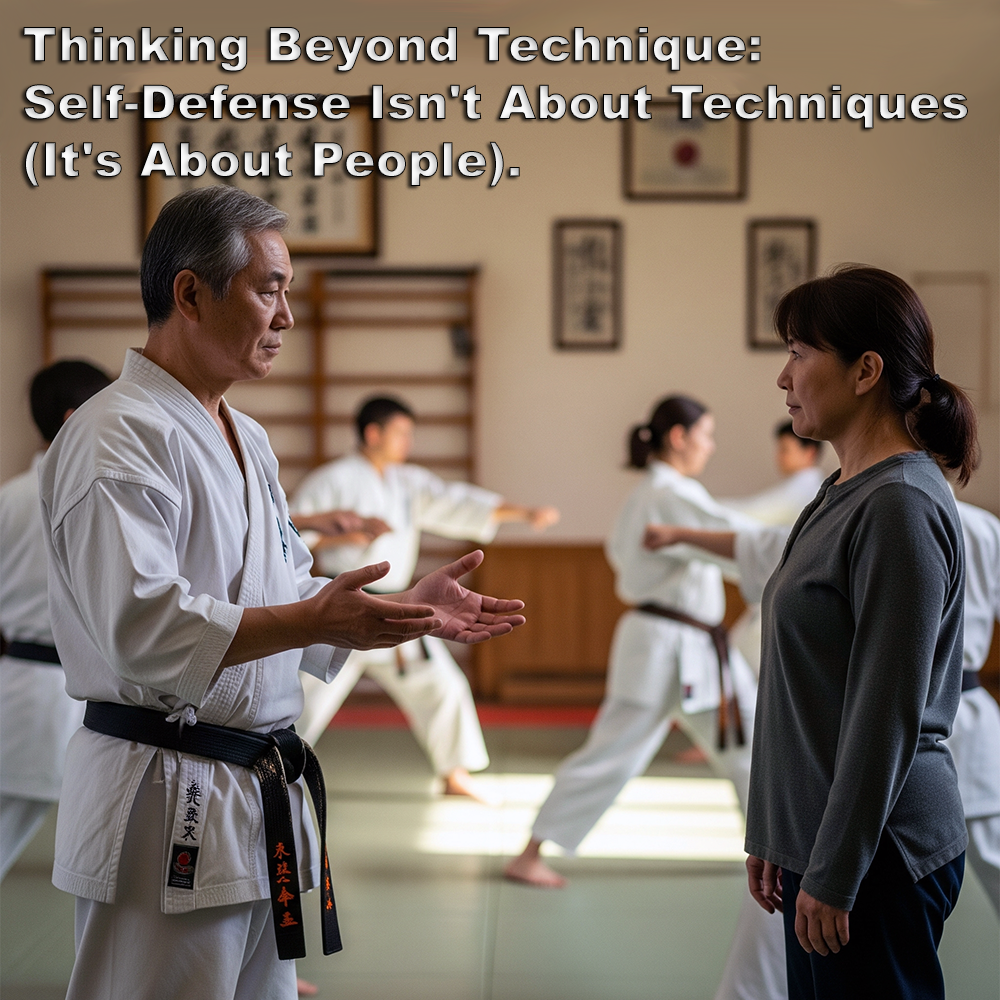
(Approx 2 minute 50 second read)
I recently wrote about helping a new mother with no experience begin learning self-defense. I wrote about mindset, awareness, and small, practical habits that could fit into a very real, very full life.
.
But as expected, some of the replies were about techniques. What they would teach. Which moves they’d include in a “women’s self-defense” class. As if the scenario I described – a tired, busy woman with a six-month-old baby and no training – could be solved with a list of techniques.
.
It’s not that techniques are useless. It’s that they’re not the starting point. Strikes, kicks, even locks – they feel like answers. But they’re not for everyone.
.
Instructors often forget that the people seeking help aren’t blank slates. Many have full lives – work, children, fatigue, and often fear. In many cases, they come without any intention of stepping into a dojo three nights a week. What they’re asking for isn’t a syllabus. It’s safety.
.
So when someone reaches out – wanting to feel safer – it’s our responsibility not to overwhelm her with techniques – it’s our job to listen. To understand her world. To offer something that actually fits inside it.
.
Real self-defense is not about showing off what you can do. It’s about helping someone else feel less vulnerable in their world.
.
And if you’re running a women’s self-defense course for people with zero experience – what exactly are they going to take away from it in a couple of hours, or even a weekend? What are you really teaching them? They need something that is going to last, not that will fade away as soon as they get home.
.
Physical techniques take time to learn. They take repetition, pressure, confidence – and perhaps most of all, the intention to strike another human being. That’s not a given. Not every woman (or man) wants to hit. Not everyone can. And trying to force that mindset on someone who hasn’t chosen it yet is not empowerment – it’s pressure.
.
Too many of these classes have participants leave with a handful of flashy techniques, but no context. You talk about ‘zanshin’ – awareness, but you don’t practice it.
.
You tell them they’re stronger than they think – but that alone won’t keep them safe.
.
Instructors defend what they teach by saying, “Well, it works for me.” But self-defense isn’t about you – it’s about the person in front of you. What works for you, might be completely unrealistic for someone just trying to feel safe walking home with a stroller.
.
And how exactly do you expect her to fight? Leave her baby in the stroller while she tries to palm-heel her way out of a purse snatch or a car-jacking?
.
What might help is a better question. Not “What techniques should you teach?” But: “What does this person need right now?” – “What can you give her that will actually help?”
.
While the original conversation was about a young mother, there are plenty of men, too, who don’t want to fight, who won’t hit back, who simply want to feel safe moving through their day.
.
This is not the martial arts I am discussing here. Not everyone wants to be a warrior. Some just want to walk to their car without fear. And if you can’t help with that, then maybe you need to rethink what it is you’re really offering.
.
The martial arts and self-protection are different. They overlap, but teaching a fight response first and ignoring the important fundamentals of preparedness is not the place to start.
.
And this is why not everyone should be claiming they teach self-defense. Because palm heel strikes, kicks, and arm locks that fall apart under pressure aren’t the answer for many people.
.
If your teaching assumes the student, after a weekend class, will suddenly become aggressive and fearless under threat – then you’re not teaching self-defense. You’re teaching fantasy.
.
Real self-defense starts with understanding people. Their fears, their limits, their reality. What it is they actually want from you as an instructor. If you forget that, you’ve already failed them.
.
.
Written by Adam Carter
